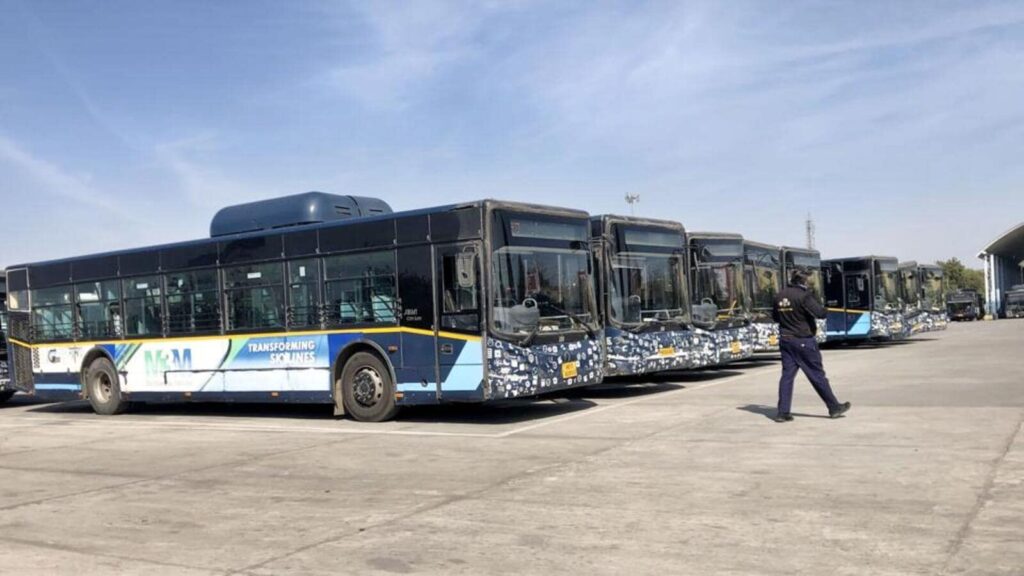GMCBL plans to add 1,000 buses to fleet, build 10 depots in 6 yrs

The Gurugram Metropolitan City Bus Limited (GMCBL) has outlined a plan to increase its bus fleet to 1,000 buses and construct 10 depots across the city over the next six years to strengthen the public transport network, officials said. This expansion comes in response to Gurugram’s rapid population growth and infrastructure development, especially along the Dwarka Expressway and other new sectors, they added.

With metro line projects underway and the construction of new residential developments, officials stressed the urgent need to improve public transportation and connect Gurugram with neighbouring cities like Delhi. “We need to quickly strengthen the public transport network to meet the needs of Gurugram’s growing population and infrastructure,” said Munish Sharma, CEO and director of GMCBL.
Existing fleet and its shortcomings
Although the GMCBL was established in August 2018 with an initial goal of operating 500 buses by 2021-2022, the fleet currently stands at only 208 buses. Of these, 50 were diverted to Faridabad, leaving only 150 buses for Gurugram’s 21 routes. This fleet size is just one-fifth of what is required to meet the city’s public transport demands. Despite efforts to cover more areas, Sharma said they are stretched thin and forced to reallocate buses to meet route demands.
According to a 2021 internal study by the Gurugram Metropolitan Development Authority (GMDA), over 449,000 cars enter the district daily, while around 447,000 exit Gurugram, with the majority travelling to or from Delhi. The lack of an adequate public transport system contributes to this heavy traffic, which could be alleviated by expanding the bus fleet.
The officer said that out of the estimated daily passenger movement of 1,640,000, about 1,100,000 people from Gurugram move towards Delhi, followed by 240,000 towards Faridabad, which is expected to increase to 300,000 towards Delhi and 730,000 towards Faridabad in the next 15 years, according to GMDA’s study.
“These aspects further push the need to have a large public transport network with strong connectivity to Delhi and neighbouring cities,” he said.
In 2022, GMCBL had planned to procure 100 CNG buses of 9-metre-length to operate them on sector roads and by-lanes as a feeder service for their main routes on which 12-metre-length buses were available but the entire project was scrapped given the upcoming e-buses scheme. “Earlier there were two route connecting Delhi from Gurugram, but both were shut down more than a year ago due to a lack of infrastructure. Only with increased fleet strength will it be able to cater for the needs of the residents and provide ease in mass transportation,” the official said.
Push for e-buses and infrastructure development
To address the growing demand, GMCBL is set to receive 100 electric buses under the central government’s PM e-Bus Sewa scheme by the end of this year, said Munish Sharma, CEO of GMCBL. Additionally, the GMCBL has requested 200 more electric buses, which they aim to procure through the Haryana government over the next year, he added. “We expect to increase our fleet capacity to 500 buses by next year,” said Sharma, adding that the city’s target is to reach 1,000 buses by 2029-2030 to cover at least 130 routes, as recommended by the GMDA in their 2021 internal study, conducted with the help of School of Planning and Architecture, Delhi.
“Furthermore, Faridabad will also get 100 e-buses with us, after which the existing 50 CNG buses will be called back,” he added.
“The demand for an additional 200 e-buses is a part of the plan to have a 1,000-bus fleet as per our mobility master plan. We need to have this fleet strength anyhow,” Sharma said, adding each of the new buses will cost about ₹90 lakh to ₹1 crore.
However, the challenge of inadequate infrastructure persists. GMCBL requires around 40 acres of land to build 10 depots for its planned fleet. Currently, the agency operates from just two depots in Sector 10 and Sector 52, with Sector 10 being transformed into an electric bus charging depot. Sharma noted that finding land for depots is a major hurdle due to high prices and limited availability within the city. “We’ve identified seven acres of land in Sectors 103 and 107 along the Dwarka Expressway for two depots, and the transfer process is being initiated by the Municipal Corporation of Gurugram,” he added.
Future needs for connectivity
As Gurugram’s population is projected to reach 6,900,000 by 2030-2031, according to an internal study by the town and country planning department, the demand for efficient public transportation will increase dramatically. Col. (retd.) RD Singhal, chief general manager of GMDA’s mobility division, stressed the need to establish proper connectivity between Gurugram and neighbouring cities like Faridabad, Rewari, and Delhi, where daily passenger movement is expected to rise significantly in the coming years. “The city will see a sharp rise in population with upcoming infrastructural developments. We must have a large public transport network to connect not just within Gurugram but with neighbouring cities,” Singhal said.
GMCBL officials acknowledged that they frequently receive requests from residents for new bus routes via social media and emails but are unable to meet these demands due to the lack of buses. “We are managing by extending existing routes, but these are only temporary solutions that increase travel time,” said a senior GMCBL official. The city previously had a bus route connecting Gurugram to Karol Bagh, Delhi, but it was discontinued due to infrastructure challenges. Officials hope that with an increased fleet, they can restore such routes and improve overall transportation within the city and to nearby areas.




